Introduction: Sewing Straight Seams
Once you've started to get the hang of the basic operations of your sewing machine, the next step is to learn how to properly attach two pieces of fabric together by creating a seam. Seams are the basic method of attachment by which almost all sewing projects are created.
In this lesson, we'll learn how to cut and pin fabric for sewing, sew a consistent distance from the edge of fabric, lock stitches, and press seams open with an iron when we're done sewing. Then I'll suggest some simple projects for you to try that will help you practice your skills!
Step 1: Fabric Grain
Before you start cutting and sewing fabric, there are a few things you need to know about fabric structure.
Woven fabric is created by weaving weft fibers through warp fibers that are stretched onto a loom. Because of the way this is done, the fabric ends up much longer in the warp direction. The warp fibers are also stronger than the weft fibers and usually run more consistently parallel to each other.
The warp fiber direction is called the grain and the weft fiber direction is called the crossgrain. On most fabric you can tell which direction is the grain because there is a strip called the selvage running along both grain edges. On quilting cotton the selvage is usually a white strip that has some numbers and writing printed in it, but on a lot of fabric it's just a strip with a slightly different weave than the rest of the fabric. The weave of the selvage creates a "self finished" edge which prevents the fabric from unraveling.
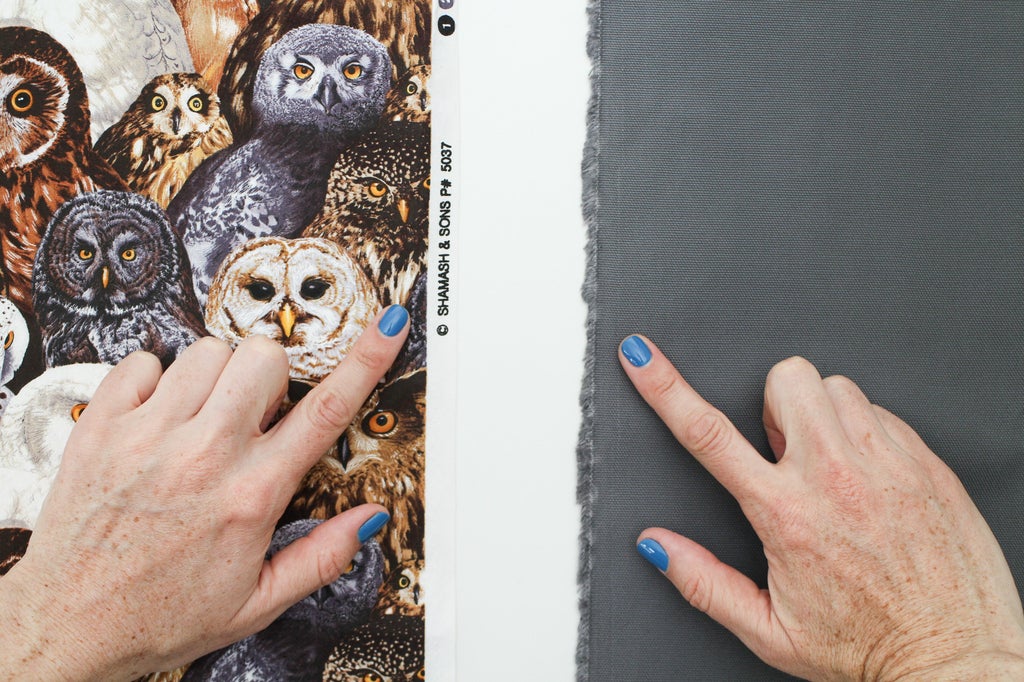
When you cut out pattern pieces, you need to orient them in a consistent direction in relation to the grain. Fabric that is woven with non-stretch fibers doesn't stretch along the grain but sometimes stretches slightly on the crossgrain, so you usually want long pattern pieces to be oriented parallel to the grain, or on grain, because that will make them the most stable.
Fabric cut at a 45 degree angle to the grain will stretch and deform quite a bit, even in non-stretch fabrics. Cutting fabric this way is called cutting on the bias, and is sometimes used to create fluid drape in dresses and other clothing. It is, however, much less common, and much harder to sew.
In this class we will mostly be cutting fabric on grain.
Step 2: The Right and Wrong Side of Fabric
Most fabric also has a front and back. On some fabric, many printed fabrics for example, it is obvious which side is the "right side", (here it's the side where you can see all the owls :) on others it is a little more subtle. Of course, which surface you decide to show on the outside of your projects is always up to you, but you need to make sure are marking and sewing consistently on one side or the other.
Step 3: Cutting
Now let's learn how to sew a very basic straight seam. To do this we are going to cut two pieces of fabric exactly the same size, and the best way to do this is to cut them at the same time.
First, take a piece of your midweight practice fabric and press some of it with an iron on a setting appropriate to your fabric. Lay out your fabric on a cutting surface with the right side facing up. Fold the end of the fabric over on top of itself, lining up the selvage edges.
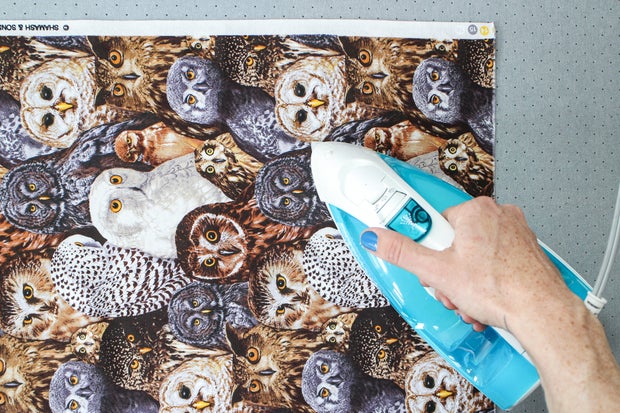
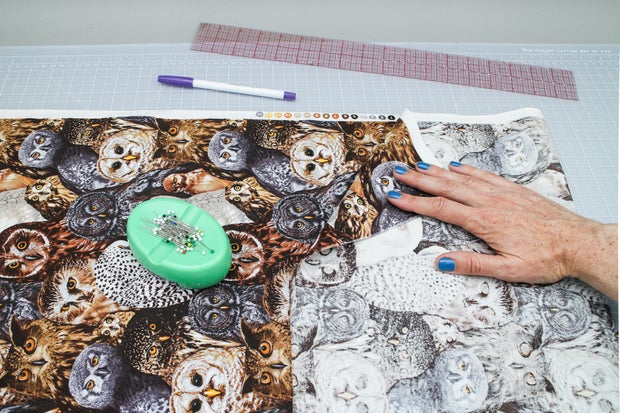
With your clear ruler and marking chalk or pen, draw a rectangle, about 4"x8" the put a couple of pins in the center of the rectangle.
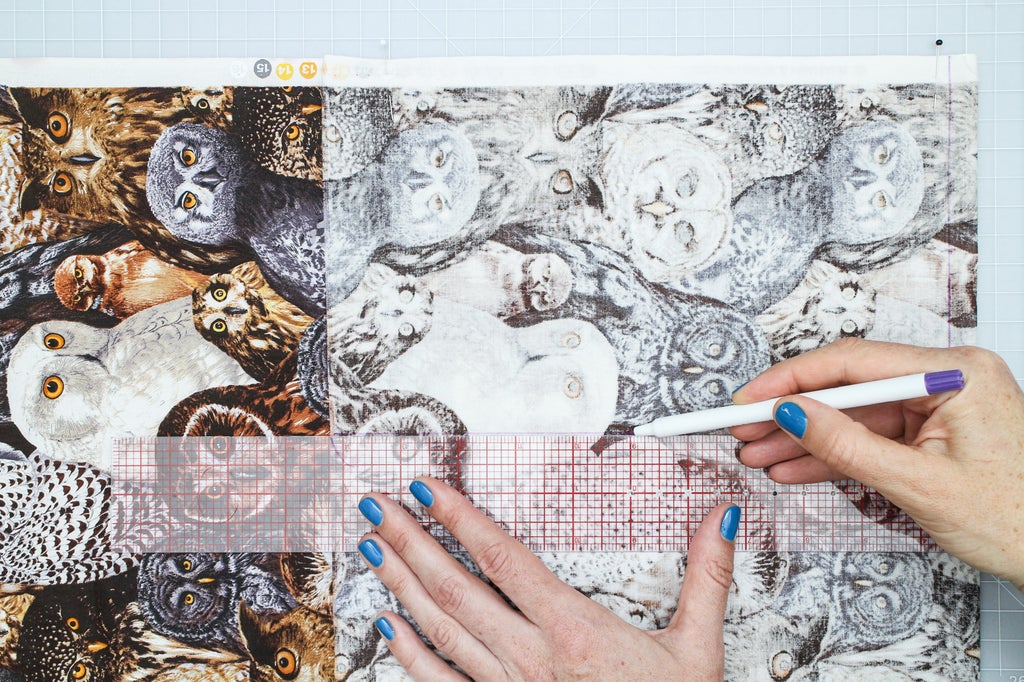
With your fabric scissors, cut out your rectangle through both layers of fabric. As you cut, keep your scissors resting against the surface beneath your fabric and cut with long slow strokes. Long steady strokes will make your cuts smooth, whereas short choppy cuts can create jagged edges.
Now you have two pieces of fabric exactly the same size layered on top of each other with the right sides of the fabric together. You could, of course, also cut out the two pieces of fabric separately, but it's more exact and efficient to do it this way.
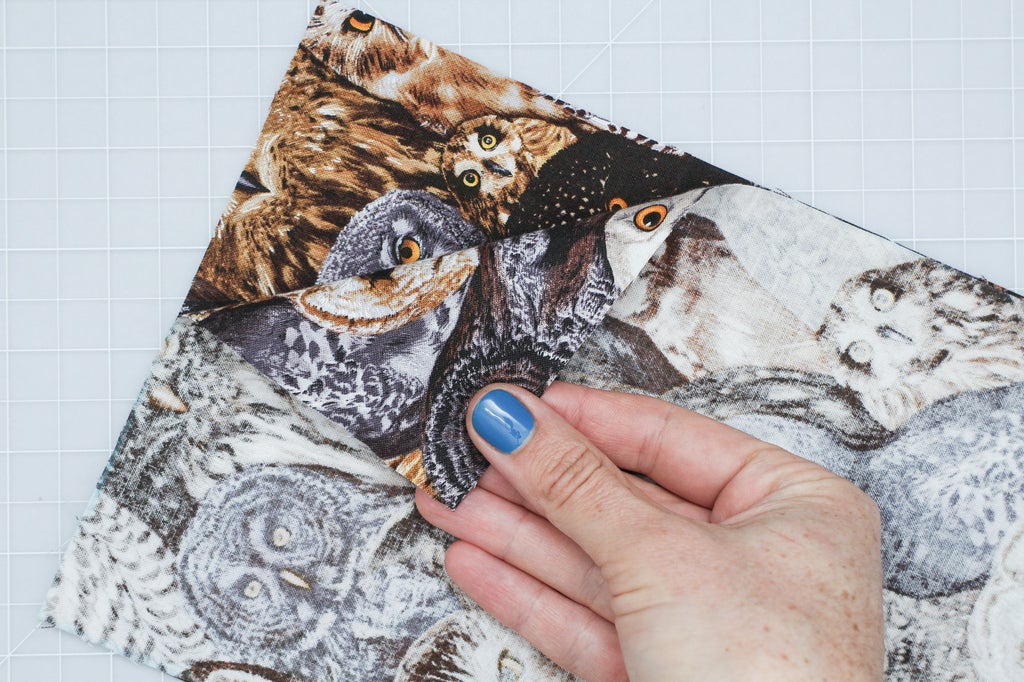
Step 4: Cutting With a Cutting Wheel
Another good fabric cutting method is a cutting wheel.
Cutting wheels are basically like pizza cutters for fabric. They have a sharp retractable wheel blade and come in different sizes. When used correctly, they create beautiful clean cut edges. I mostly use them for cutting straight lines, but some people use them for curves as well.
When you're using a cutting wheel, you need to cut on top of a cutting mat or other appropriate cutting surface. Cutting surfaces need to be flat, smooth and somewhat soft so your blade doesn't get dulled or broken too easily.
You'll need to use a long metal, or very thick plastic ruler as a guide. It helps if your ruler is at least as long as the line you need to cut.
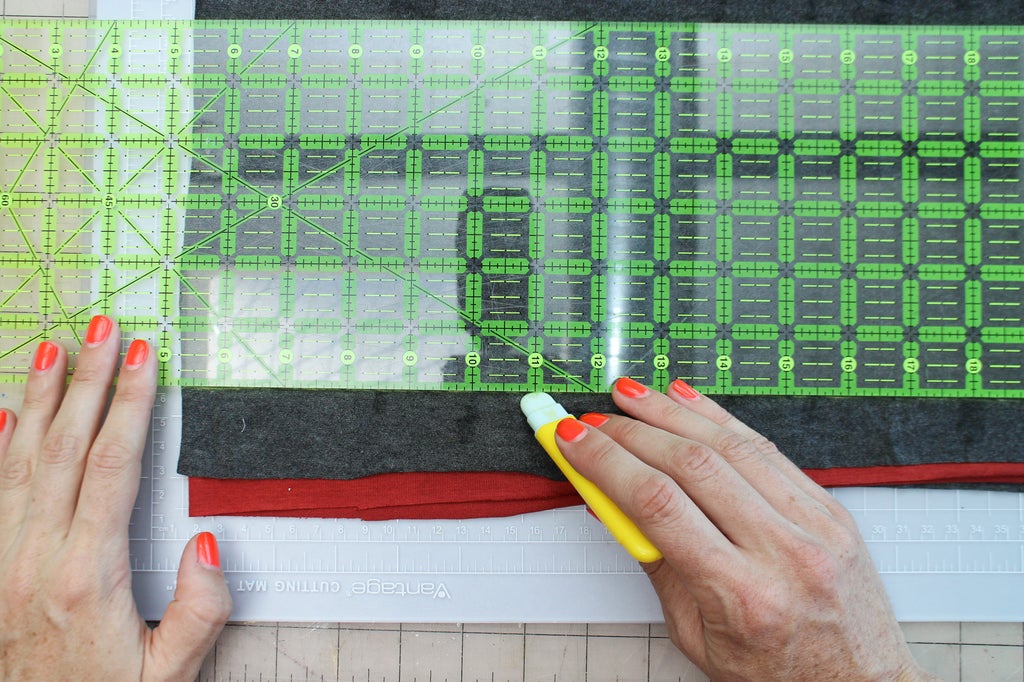
To cut, lay your ruler along the line you need to cut, hold it down with your free hand and run your cutting wheel directly along the edge of the ruler, pushing away from you. Press down firmly so you cut all the way through the fabric. Make your cut in one long stroke if possible, starting and stopping makes jagged edges more likely. Cut both outer edges and then the end.

Always be safe! Keep your free hand out of the path of your cutting wheel blade and work slowly and consciously. Cutting wheels can be very dangerous if you aren't being careful. Keep all your fingers!
Step 5: Marking and Seam Allowance
When you are connecting two pieces of fabric together with a seam, you need to leave a space between the edge of the fabric and the stitching line, this space is called a seam allowance.
Depending on what you are sewing, seam allowances can be anywhere from 1/4" to 2". We are going to give our seam a 1" seam allowance.
To do this, use your clear ruler and disappearing pen to mark a line 1" in from the edge of your fabric.
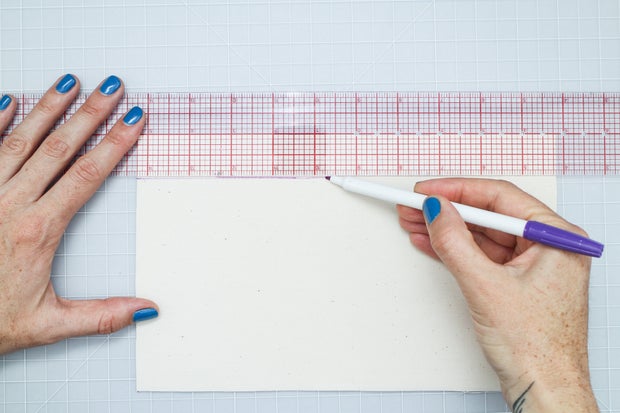

You don't always have to mark sewing lines, and it's more important on curved seams than flat seams like this one. When you get more comfortable with sewing, you will stop doing it as frequently, but for now, it will be helpful.
Step 6: To Pin or Not to Pin
When sewing a seam, it's often useful to hold your two pieces of fabric together with pins so the layers stay aligned as you sew. Depending on what kind of fabric you are sewing, and the shape of your seam, pining can be more or less important, but it's usually a good idea to pin when you're first learning how to sew.
To properly pin a seam for sewing, stick your pins in perpendicular to your sewing line with the heads of the pins facing out towards the edge of the fabric. This will let you sew over the pins if you have to, or make them easier to take out as your sew. Weave the pins in and out of the fabric so they are going under the sewing line you marked.
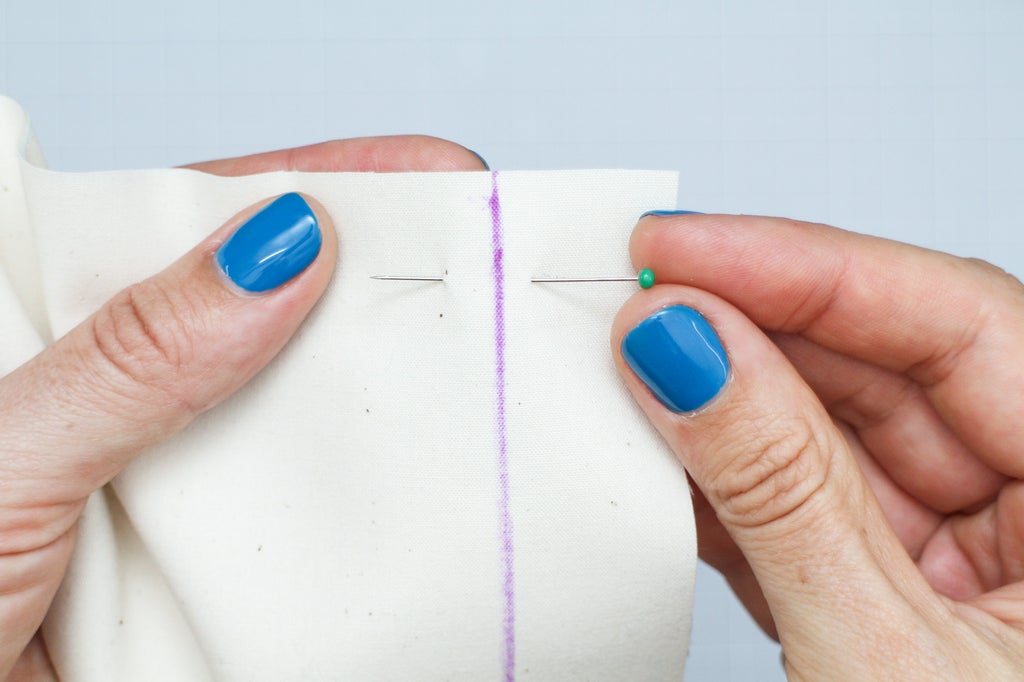
On a straight seam like this, you really don't need too many pins, about one every two inches will be enough.
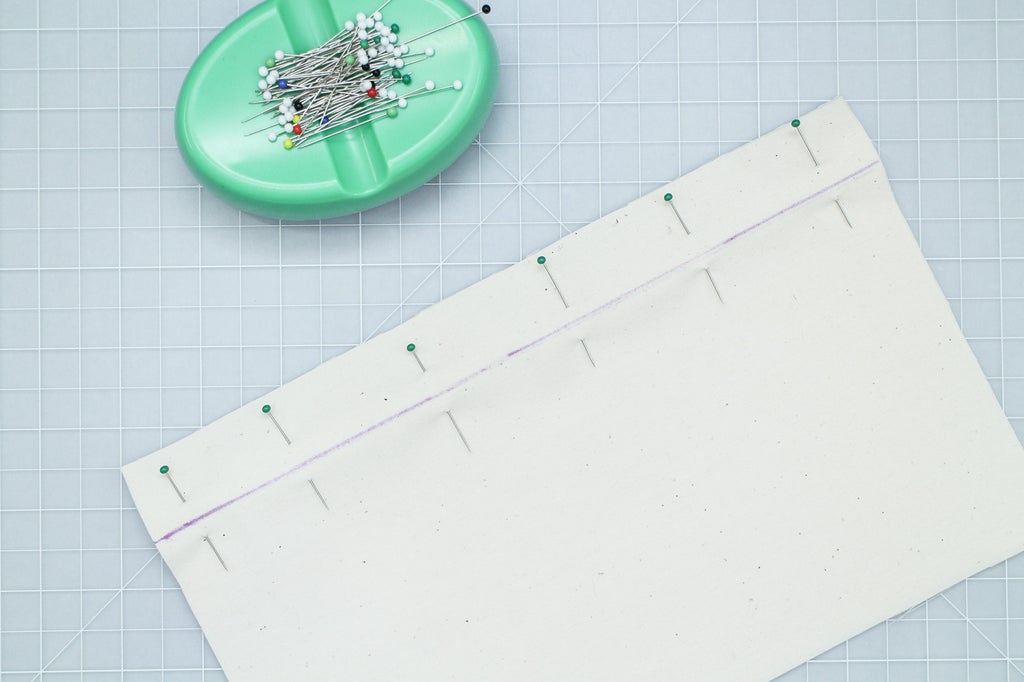
Step 7: Sewing a Seam
Now put your fabric into the machine so the needle will be starting about 1/4" in from the beginning of the fabric. On the right side of your needle plate, you should find a seam allowance guide with small lines and numbers that will help you sew straight, perfectly measured seams. Find the mark that indicates a one inch seam allowance (mine doesn't actually have one, so I put a piece of scotch tape on my needle plate as a marker for that distance), and line the edge of the fabric up with this.
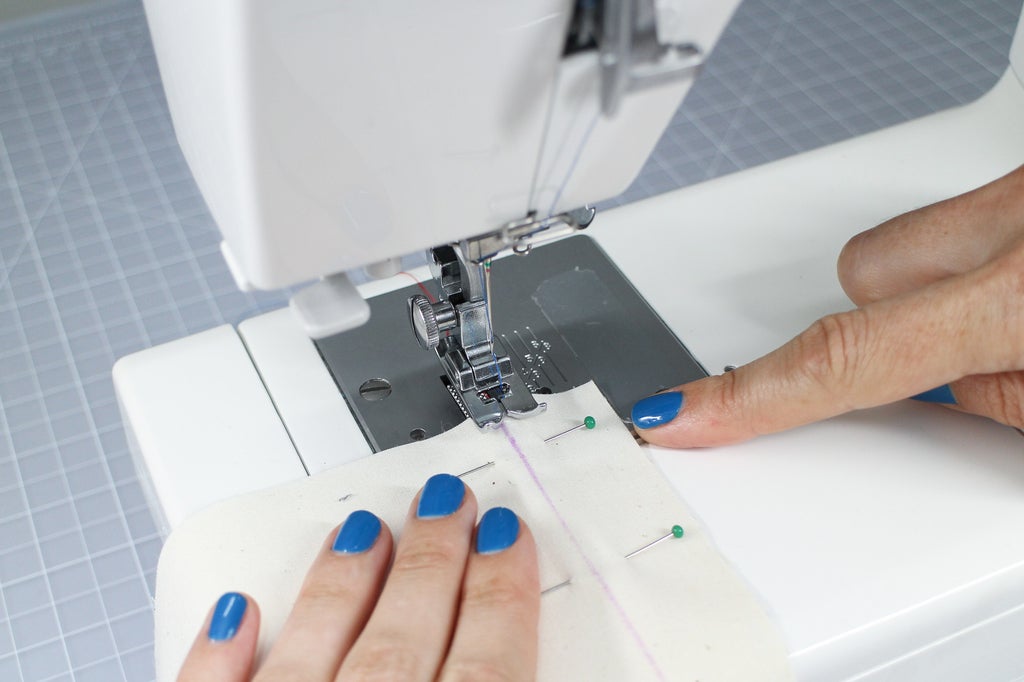
Lower the presser foot, then begin sewing slowly. After you've sewn a couple of stitches, stop, press down on the backstitch lever, and sew back a few stitches to the beginning of the fabric. Try not to go back over the edge.
Then let go of the lever and sew forward again. Sewing backward and forward like this locks the stitches at the beginning of the seam so they won't come unraveled.
To give your seam an even 1" seam allowance, don't watch the needle, watch where the edge of the fabric lines up with the seam allowance guide on the needle plate. Of course, as you do this, be careful not to let your fingers go under the needle.
Most home machines can sew over pins, but I usually like to take them out as I go. It's fine to start and stop sewing to do this, but once you get into a rhythm, you will usually be able to take the pins out as your fabric is moving.
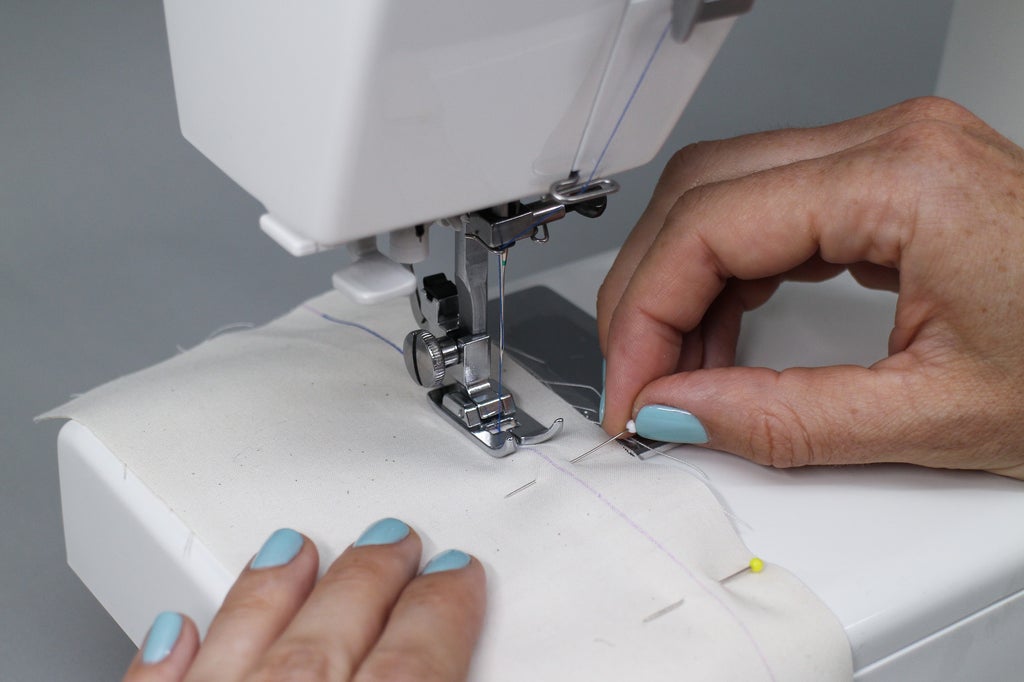
When you get to the end of the fabric, lock your stitches again like you did at the beginning. Pull out your fabric and cut your thread. Trim your hanging threads as close as possible to your fabric on both ends of your seam.
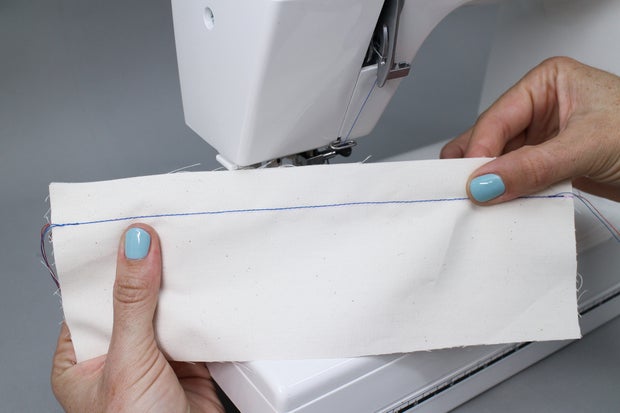
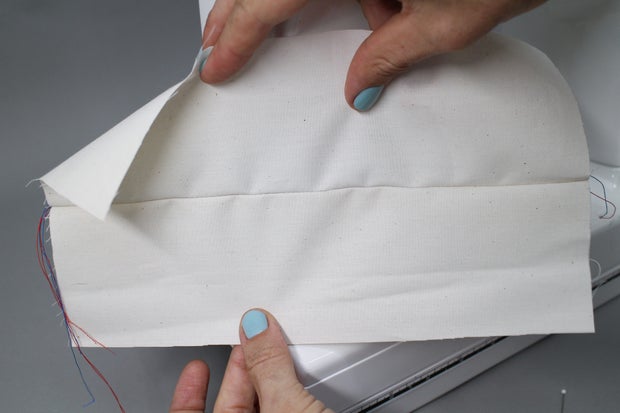
Take a look at your seam, did you manage to sew a straight line that is an even distance away from the edge of your fabric? Does your stitch tension look good? Grab the two pieces of fabric and tug them gently, in opposite directions. Does your stitching stay in place or start to unravel at the ends? If any of this is off, don't worry, just keep practicing until you get a strong, straight seam.
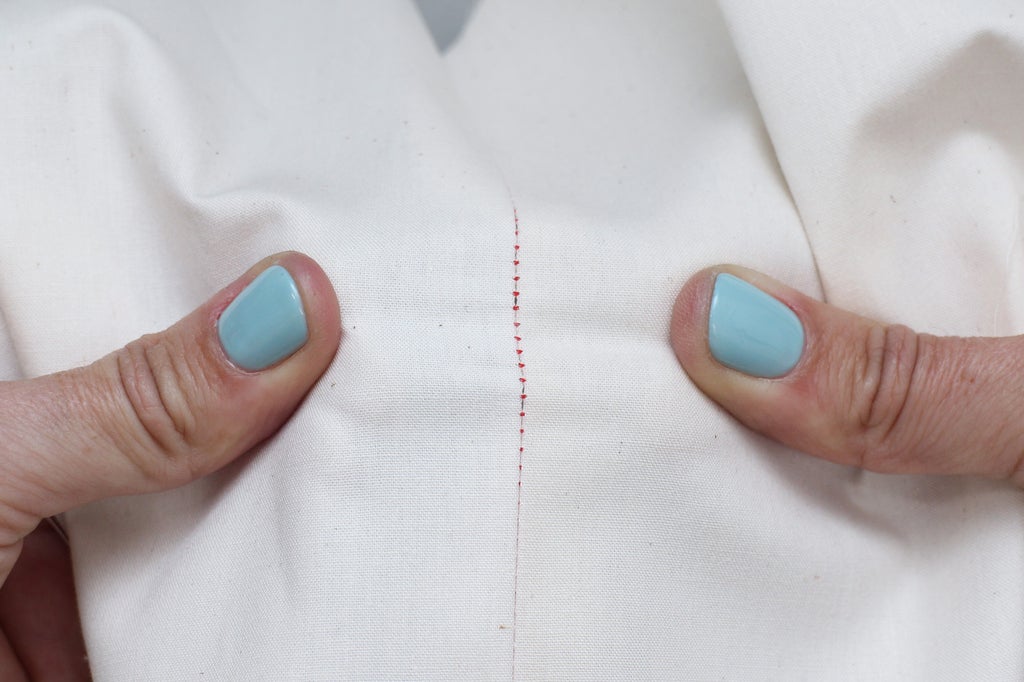
Step 8: Pressing Seams Open
Ironing seams is one of the most important steps in sewing. Properly pressed seams can be the difference between projects that look beautifully hand made, and projects that look amateur.
After you sew a seam, take it to your ironing board and lay it on down with the layers spread apart and the seam allowance facing up. Make sure your iron is set to the right setting for your type of fabric.
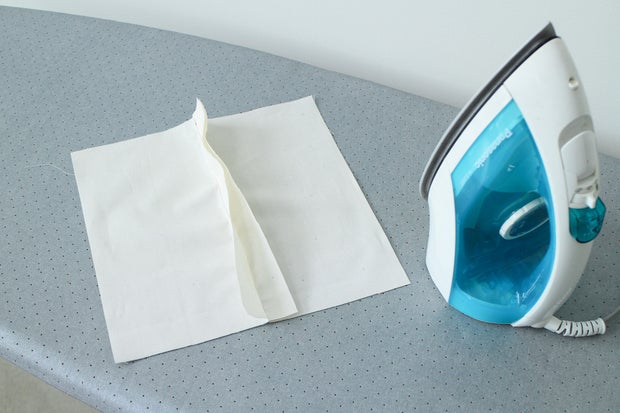

Use your iron to press the seam flat like this:
Now pick up your seam and look at it. How is it looking? Do the two pieces of fabric meet in a nice neat line? If so, you've sewn your first seam!
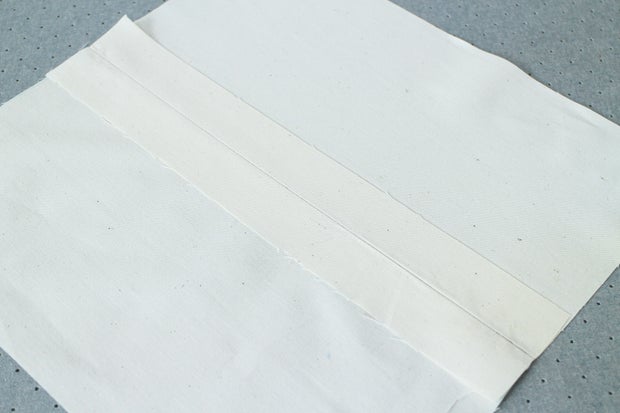
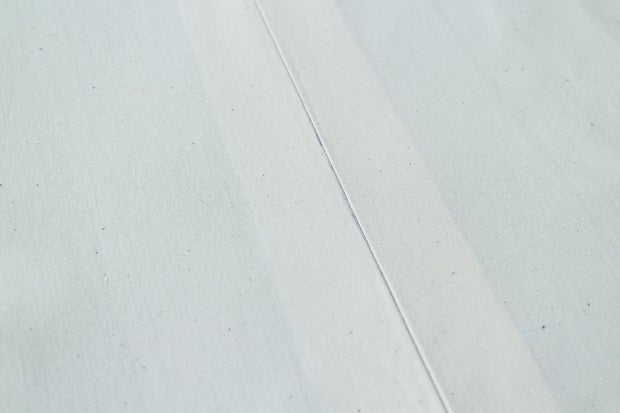
Does your fabric have Star Wars technical plans and owls on it!?? If it does, we should be friends :)
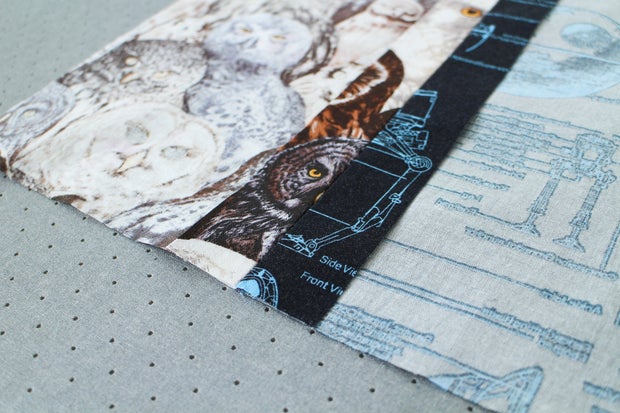
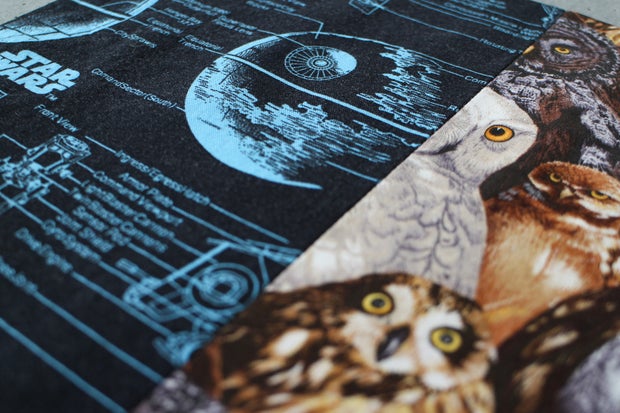
As you can see more clearly on the printed fabric, by sewing your fabric together with the wrong sides facing out, you have now created a finished seam on the right side of your fabric with unfinished seam allowances on the wrong side. In the next lesson we'll talk about how and when you need to finish the edges of your seam allowances.
Step 9: Oops!
It doesn't matter here because you're just practicing, but what if you make a mistake when you're sewing a project??
Basically, it's all over, just throw away your sewing machine and quit now.
Just kidding! Don't worry, you can take out stitches pretty easily.
Just use your seam ripper (it's that little tool that looks like a tiny lobster claw, or some kind of scary implement from the dentist's office).
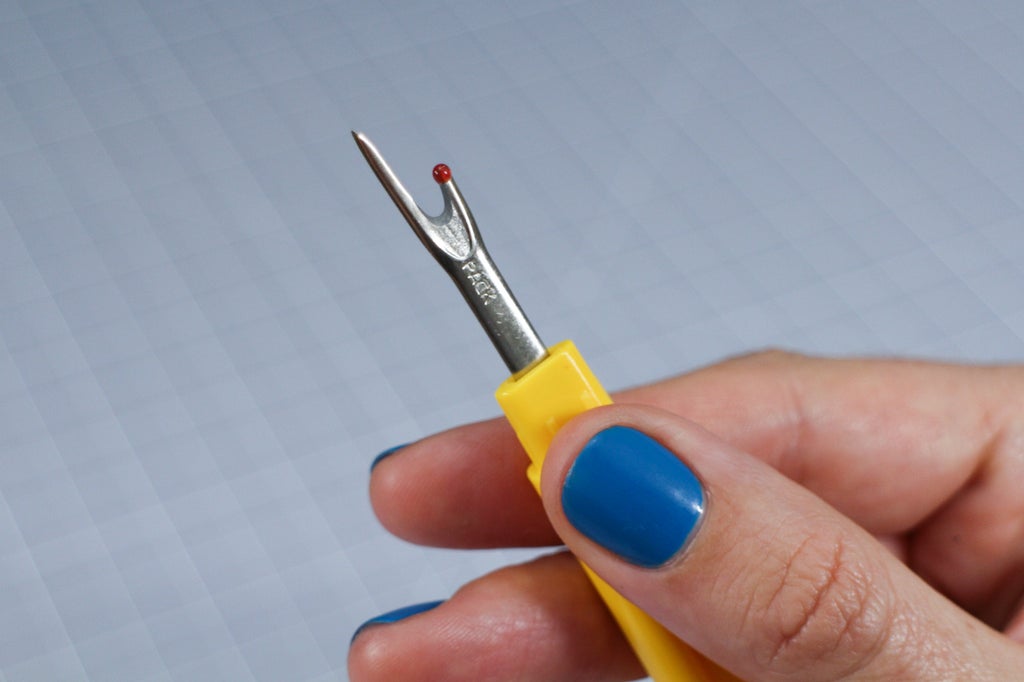
Wedge the sharp pointy end between your stitches like this and cut them with the little blade in the dip of the claw. Be careful not to cut through the fabric itself.
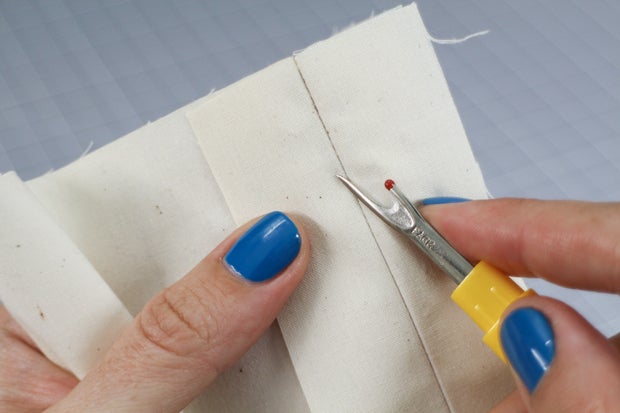
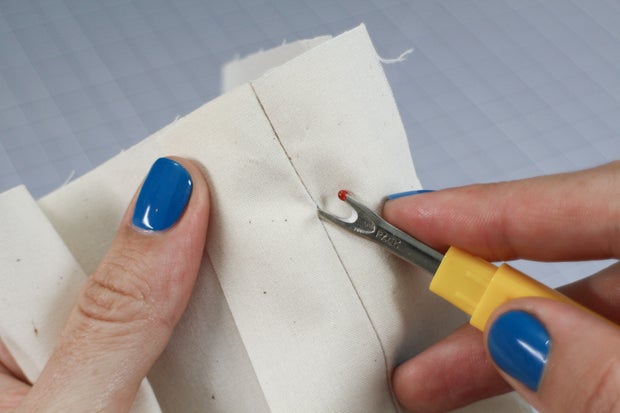
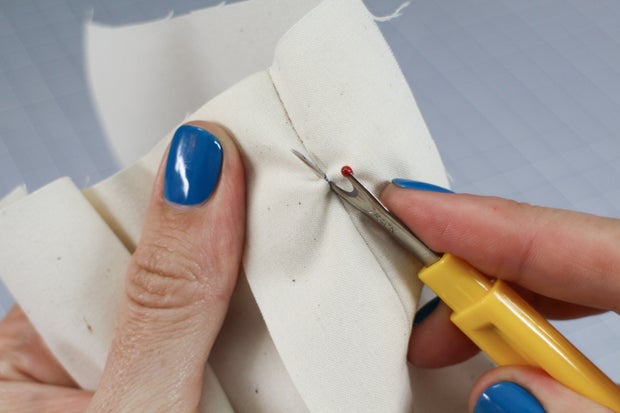
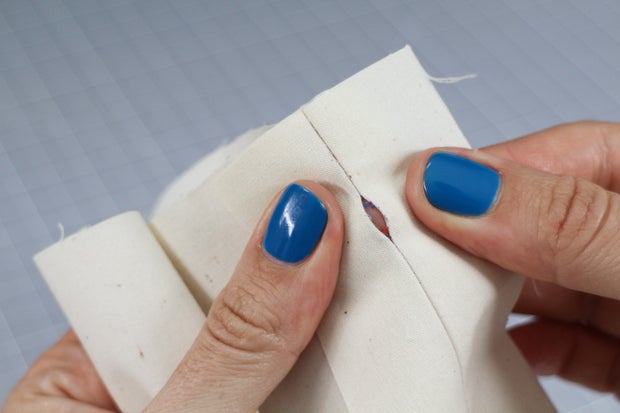
You can also remove stitches from one side of the seam, like this:
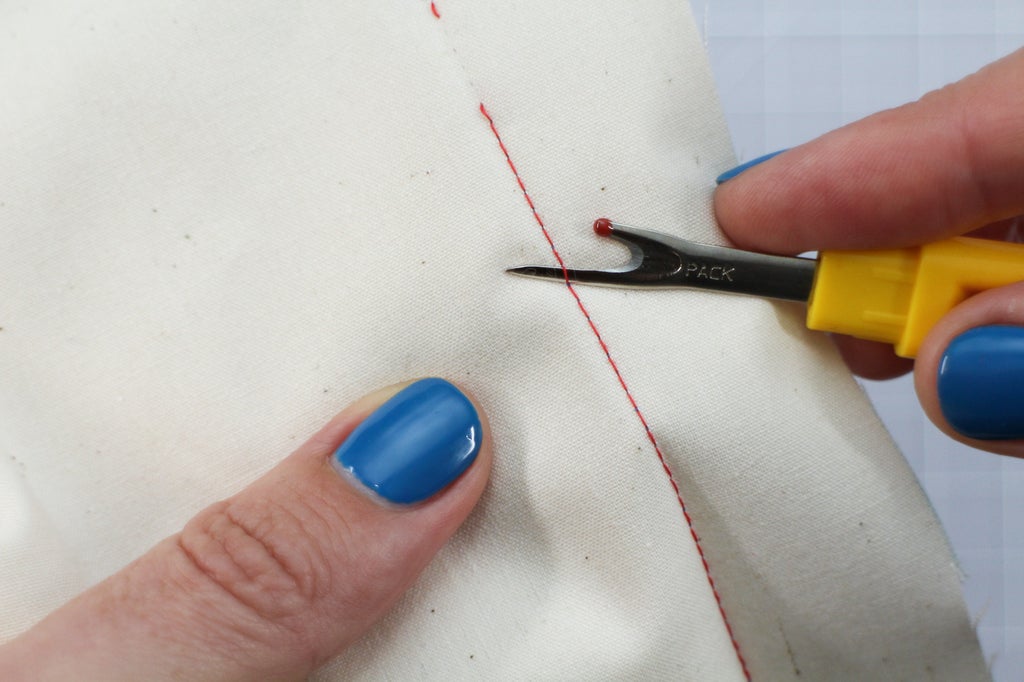
Sometimes, you can take out one stitch every inch or so and then the whole thing will pull apart. The backstitched ends take a little more fiddling to get out, but you can do it.
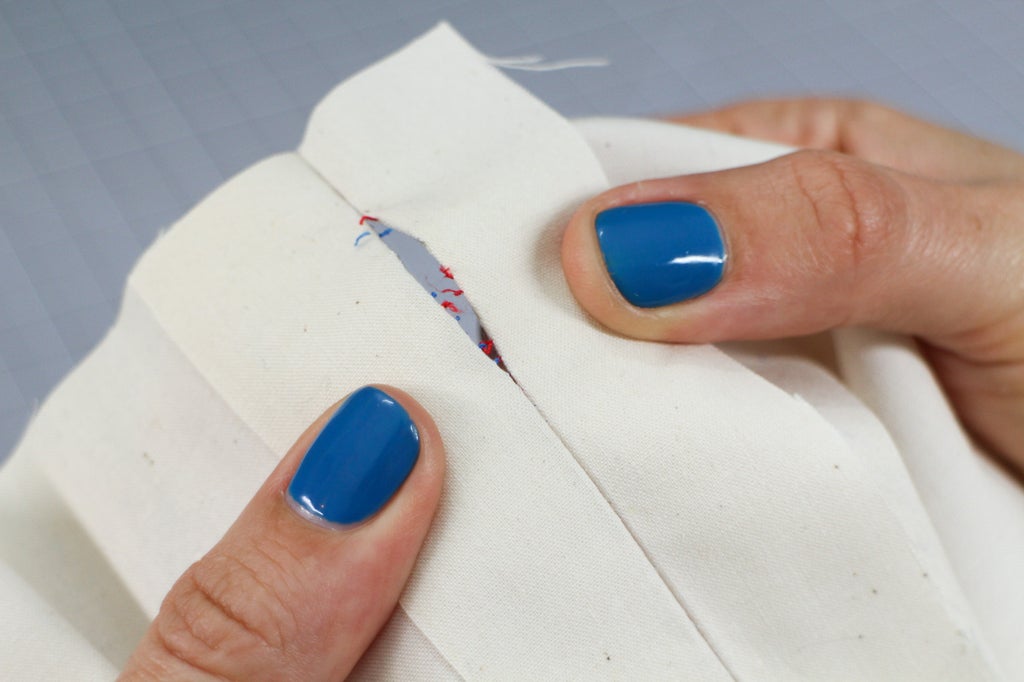
Step 10: Quiz
{
"id": "quiz-1",
"question": "The outside edges of a woven bolt of fabric along the grain are called?",
"answers": [
{
"title": "the selvage",
"correct": true
},
{
"title": "the gutter",
"correct": false
},
{
"title": "the ditch",
"correct": false
}
],
"correctNotice": "Well Done!",
"incorrectNotice": "Try Again"
}
{
"id": "quiz-2",
"question": "Woven fabric stretches most along the:",
"answers": [
{
"title": "grain",
"correct": false
},
{
"title": "bias",
"correct": true
},
{
"title": "crossgrain",
"correct": false
}
],
"correctNotice": "Well Done!",
"incorrectNotice": "Try Again"
}
{
"id": "quiz-3",
"question": "At the beginning and end of a seam you need to:",
"answers": [
{
"title": "zigzag",
"correct": false
},
{
"title": "baste",
"correct": false
},
{
"title": "backstitch",
"correct": true
}
],
"correctNotice": "Well Done!",
"incorrectNotice": "Try Again"
}
Step 11: What's Next?
That's it for now! In the next lesson we'll learn different techniques for finishing seams and creating hems.
If you want to practice your straight seam sewing skills, there are a lot of simple projects on Instructables you can try, like this Easy Cloth Tote Bag project of mine, which incorporates skills from both this lesson and the next. I love this project because it is simple, but very useful and easy to customize with your own unique fabric choices :)






